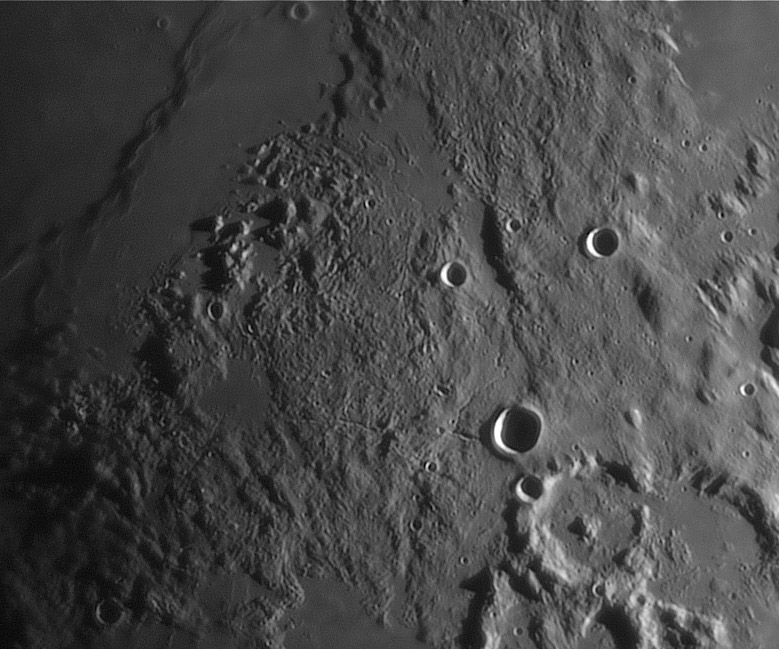Difference between revisions of "April 8, 2010"
| Line 1: | Line 1: | ||
__NOTOC__ | __NOTOC__ | ||
=Textured Ejecta= | =Textured Ejecta= | ||
| − | |||
<!-- ws:start:WikiTextHeadingRule:1:<h1> --> | <!-- ws:start:WikiTextHeadingRule:1:<h1> --> | ||
<!-- ws:start:WikiTextLocalImageRule:16:<img src="/file/view/LPOD-Apr-8-10.jpg/132902153/LPOD-Apr-8-10.jpg" alt="" title="" /> -->[[File:LPOD-Apr-8-10.jpg|LPOD-Apr-8-10.jpg]]<!-- ws:end:WikiTextLocalImageRule:16 --><br /> | <!-- ws:start:WikiTextLocalImageRule:16:<img src="/file/view/LPOD-Apr-8-10.jpg/132902153/LPOD-Apr-8-10.jpg" alt="" title="" /> -->[[File:LPOD-Apr-8-10.jpg|LPOD-Apr-8-10.jpg]]<!-- ws:end:WikiTextLocalImageRule:16 --><br /> | ||
| − | <em>image by [mailto:jocelyn.serot@wanadoo.fr Jocelyn Sérot], France</em><br /> | + | <em>image by [mailto:jocelyn.serot@wanadoo.fr" rel="nofollow Jocelyn Sérot], France</em><br /> |
<br /> | <br /> | ||
| − | What a land of contrasts. Smooth mare lavas from circular-edged Sinus Aestuum at upper left embay and truncate the highly textured hilly terrain left of the image center. The hilly stuff is Imbrium ejecta laid down hundreds of millions of years before these lavas erupted onto the low spots. At bottom right are Pallas and Murchison, which formed before Imbrium as evidenced by the erosion of their rims and [http://www.lpod.org/?m=20061102 flow] of rough pasty ejecta onto Pallas' floor. The Bode III rille meanders northward just above its namesake crater (the biggest one, nearly full of shadows), and Bode I (both numbers from the <em>System of Lunar Craters</em> chart D4) is near top center of the image; I wonder if they were once connected as a single rille? This is a wondrously smooth-toned image that invites further exploration.<br /> | + | What a land of contrasts. Smooth mare lavas from circular-edged Sinus Aestuum at upper left embay and truncate the highly textured hilly terrain left of the image center. The hilly stuff is Imbrium ejecta laid down hundreds of millions of years before these lavas erupted onto the low spots. At bottom right are Pallas and Murchison, which formed before Imbrium as evidenced by the erosion of their rims and [http://www.lpod.org/?m=20061102" rel="nofollow flow] of rough pasty ejecta onto Pallas' floor. The Bode III rille meanders northward just above its namesake crater (the biggest one, nearly full of shadows), and Bode I (both numbers from the <em>System of Lunar Craters</em> chart D4) is near top center of the image; I wonder if they were once connected as a single rille? This is a wondrously smooth-toned image that invites further exploration.<br /> |
<br /> | <br /> | ||
| − | <em>[mailto:tychocrater@yahoo.com Chuck Wood]</em><br /> | + | <em>[mailto:tychocrater@yahoo.com" rel="nofollow Chuck Wood]</em><br /> |
<br /> | <br /> | ||
<strong>Technical Details</strong><br /> | <strong>Technical Details</strong><br /> | ||
| Line 17: | Line 16: | ||
<br /> | <br /> | ||
<hr /> | <hr /> | ||
| − | <div>You can support LPOD when you buy any book from Amazon thru [http://www.lpod.org/?page_id=591 LPOD!]<br /> | + | <div>You can support LPOD when you buy any book from Amazon thru [http://www.lpod.org/?page_id=591" rel="nofollow LPOD!]<br /> |
</div> | </div> | ||
| − | |||
---- | ---- | ||
===COMMENTS?=== | ===COMMENTS?=== | ||
Click on this icon [[image:PostIcon.jpg]] at the upper right to post a comment. | Click on this icon [[image:PostIcon.jpg]] at the upper right to post a comment. | ||
Revision as of 19:21, 4 January 2015
Textured Ejecta

image by " rel="nofollow Jocelyn Sérot, France
What a land of contrasts. Smooth mare lavas from circular-edged Sinus Aestuum at upper left embay and truncate the highly textured hilly terrain left of the image center. The hilly stuff is Imbrium ejecta laid down hundreds of millions of years before these lavas erupted onto the low spots. At bottom right are Pallas and Murchison, which formed before Imbrium as evidenced by the erosion of their rims and " rel="nofollow flow of rough pasty ejecta onto Pallas' floor. The Bode III rille meanders northward just above its namesake crater (the biggest one, nearly full of shadows), and Bode I (both numbers from the System of Lunar Craters chart D4) is near top center of the image; I wonder if they were once connected as a single rille? This is a wondrously smooth-toned image that invites further exploration.
" rel="nofollow Chuck Wood
Technical Details
2010-03-22, 18h32 UT. Mewlon 210 @ F/D=24, DMK 31, Avistack+Registax (300/2500 im. stacked)
Related Links
Rükl plate 33
COMMENTS?
Click on this icon File:PostIcon.jpg at the upper right to post a comment.



